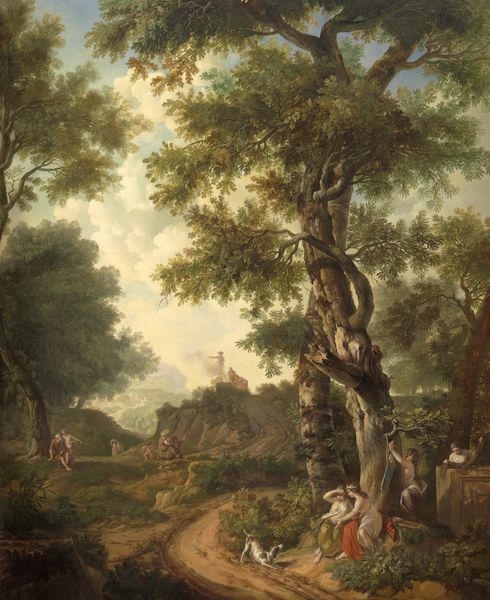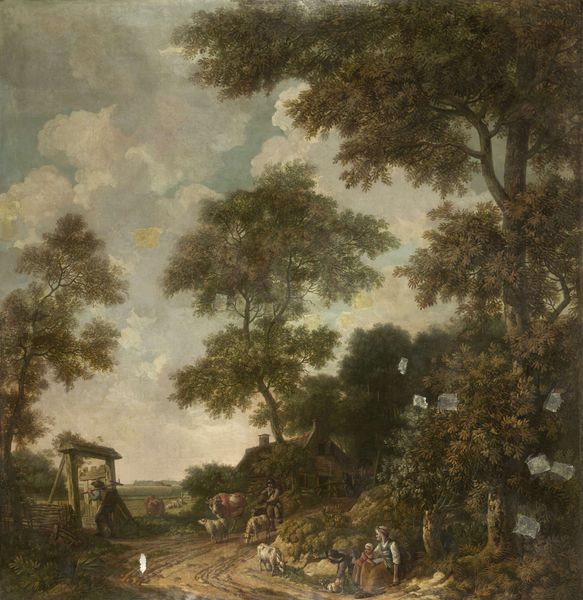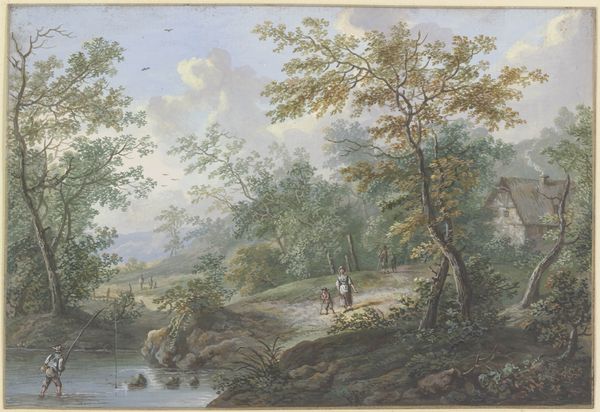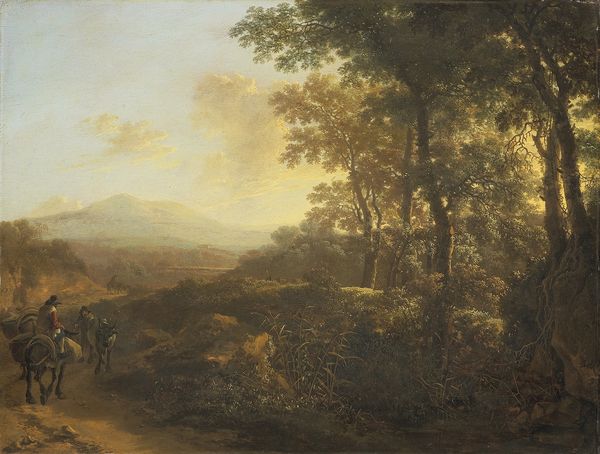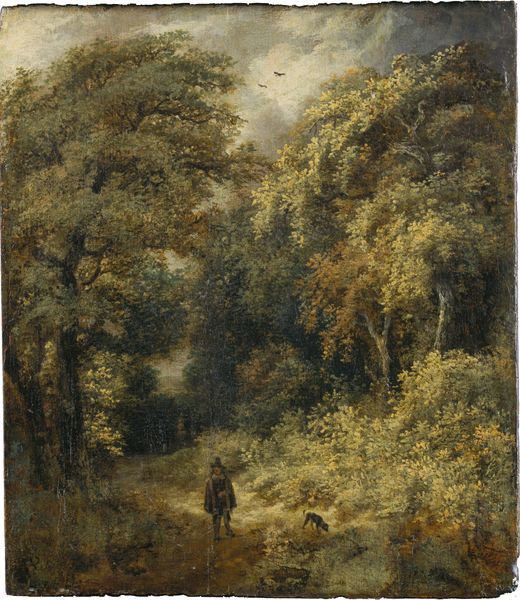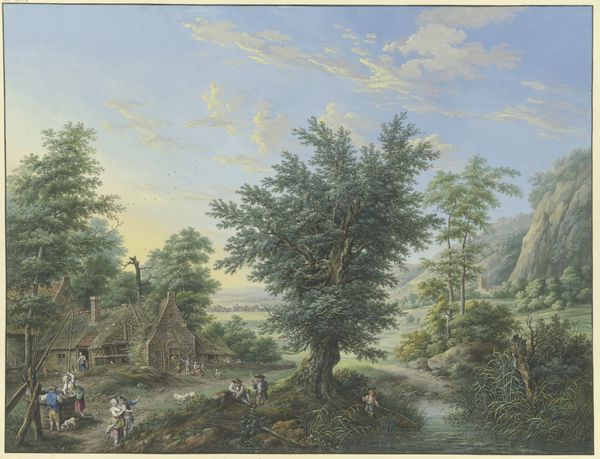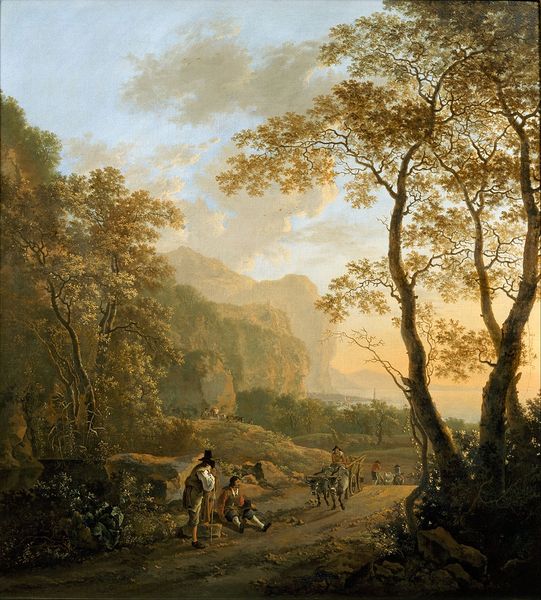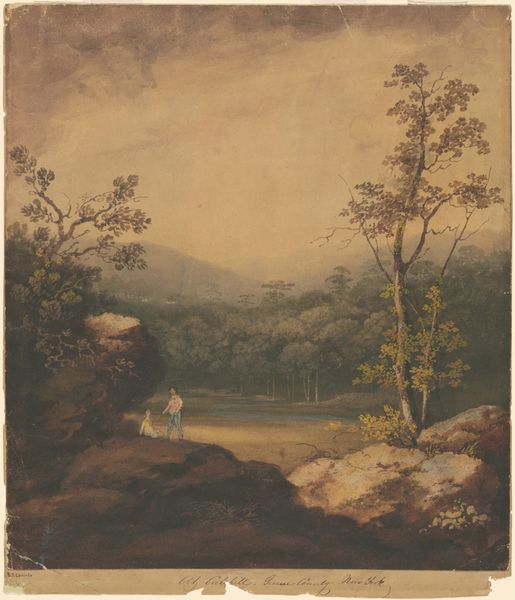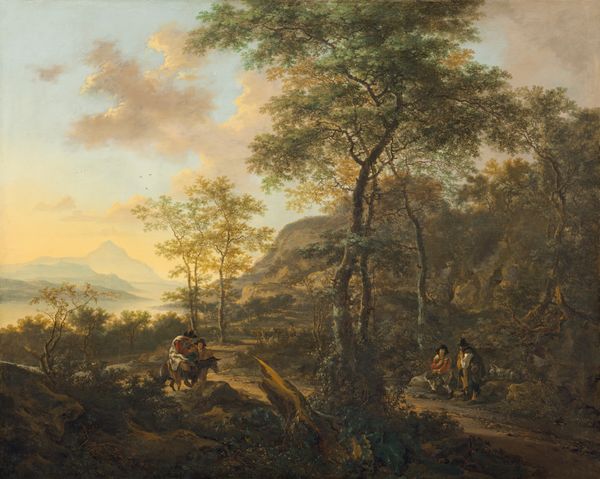
Arcadisch landschap met linksvoor kinderen met een vogel en een hond 1771
0:00
0:00
jurriaanandriessen
Rijksmuseum
#
possibly oil pastel
#
earthy tone
#
coffee painting
#
underpainting
#
painting painterly
#
watercolour bleed
#
watercolour illustration
#
surrealist
#
watercolor
#
warm toned green
Dimensions: height 325 cm, width 248 cm
Copyright: Rijks Museum: Open Domain
Curator: I’m immediately struck by the idyllic quality of this painting. The scale makes you feel enveloped in it. Editor: And yet, the palette feels… restrained. I'd almost call it 'sepia-toned.' It lacks vibrancy, even for a landscape. Curator: Perhaps, but consider the context. This is "Arcadian Landscape with Children, Bird and Dog" by Jurriaan Andriessen, created in 1771. It reflects the romantic ideals prevalent during that period. Nature, not as raw wilderness, but as a carefully constructed paradise, reflects social and political ideas about how the world should be. Editor: Constructed is the key word. It's a pastiche. Observe the handling of the paint, see the thinness and delicate layering, the watercolour bleed effect. It suggests a level of artifice, the image created more with dyes and layering of surface textures than robust physical materials. How much actual “nature” do we see in a landscape that comes across so calculated and manufactured? Curator: But isn’t that art's power—its ability to reshape reality? Look how he positions these figures! They almost act as a theatrical troupe situated on a set piece within a carefully designed landscape. There's definitely something contrived here. They create an aspirational ideal. Editor: Maybe I am stuck on its constructed nature! And that large tree at the center—it has that lovely old texture and weathered aesthetic, and appears like it was artificially placed for viewing. And that group to the right around a man made water source – a perfect setting. Curator: Exactly. In its artful composition, Andriessen offers commentary. This artwork proposes an alternative to a world of conflict and complexity. Consider the history. This work speaks to that very social yearning for harmony and pastoral beauty. It's not a true landscape. It is an escapist fantasy on public display, shaped by societal desires. Editor: The details reveal all, don't they? Seeing the artist's hand, so to speak. From the perspective of material conditions, these paintings would often occupy walls, rooms even, dictating taste. They act like early forms of wallpaper almost. This offers a reminder to challenge conventional narratives about artistry itself. Curator: It shows us, perhaps, that even in idealized settings, art continues engaging with, commenting on, the culture that produces it. Editor: Yes. We see more when we also reflect on production and display within societal structures.
Comments
No comments
Be the first to comment and join the conversation on the ultimate creative platform.
